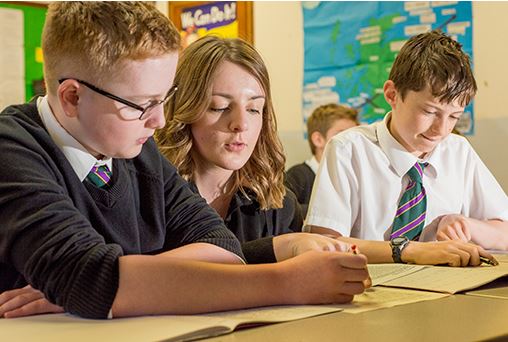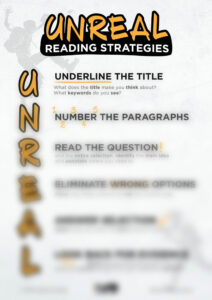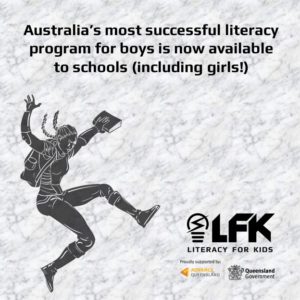Easy, fun ways to support students with writing and reading

This article is going to explore some things to keep in mind when thinking about and reflecting on your literacy blocks and how you have been teaching, reading and writing in your classroom. How can you make reading and writing come to life in your classroom? Here are some ideas – is there something that you’d like to try?
1. Read to Please
You will have heard this before, but providing opportunities for students to read for pleasure is one of the BEST ways that you can improve their comprehension. Students’ vocabulary will also improve because they are not being forced into reading a certain text that the teacher is providing for them. Whenever students read for pleasure they’re going to want to explore deeper. Aim to read everyday.
Encourage library borrowing before they break for the holidays. Your Teacher Librarian is your best human resource to direct students to what they like to read.
Download and print our LFK LFB Reading Survey printable for your learners, ready for Term 3. This will also give you an indication as to how they view themselves as a reader.
2. Box of Books & the Newspaper
Include a shelf of books or a box of books in your classroom. Ensure that you’re including biographies and different forms of genre. Consider bringing in the newspaper from the weekend – it contains the sport report from the weekend. This will appeal to your sport lovers: the footy fans (rugby, league and soccer), netball lovers, hard-heeled hockey fans etc.
A newspaper is also a great way to keep your students up to date with current affairs. Weekend papers feature a ‘Wellness’ section – which may appeal to students who are interested in health, diet, exercise, meditation etc. A newspaper offers chunks of information, rather than long text.
3. DEADLINE (Dedicated Effort for Achieving Desired Literary Excellence)
 I’m a bit of a fan of an Acronym – as those who received our UNREAL Reading poster will know (see left).
I’m a bit of a fan of an Acronym – as those who received our UNREAL Reading poster will know (see left).
Another fun acronym that I’ve used to help students to develop a writing routine is DEADLINE. Encourage your students to write every day, even if it’s just a few minutes. Writing doesn’t need to be a long essay – little moments can be either structured or free writing. Use this acronym in your other subject areas – students can respond to information that they’ve read in maths/history/geography etc. Try to find the time to embed those quick opportunities to write.
I attempt to disguise writing in a way where students have maximum buy-in but don’t even realise they’re actually doing it. Just 10 minutes (or less each day) will increase stamina, build confidence, provide opportunities for writing skill practice, and will leave your students craving more. So who’s ready to eliminate the moans, those groans, and maybe even tears?
4. Graphic Organisers

Utilise these to help students to organise their thoughts. We’ve added some fun by using food to help kids plan their writing: the OREO biscuit Opinion, Reason, Example, Opinion) and the Hamburger paragraph plus other visual examples to suit all your learners. Click here to download and print.
A key point here is that you want to engage your students in talking about what they’re reading and what they’re writing before, during and even after they are doing the reading or writing. You also want to provide students with opportunities to write for different purposes and read for different purposes.
5. Feedback & Collaboration
Feedback is going to help your students to improve their writing and to improve their reading. If you hear them reading a certain way, provide them with specific, constructive feedback so that they know what their goal will be to work toward. The same thing for writing: you have to be specific, constructive, and timely when you are thinking about giving feedback.
I do acknowledge that feedback can be time-consuming – especially when you are trying to get to every student! Consider the following to ease your stress:
- Grouping students: opportunities to collaborate on writing projects, research projects and reading can help them to learn from each other and to improve their writing and reading skills overall.
- Save their writing to a flash drive – this can allow them to print it from another part of the school (if you don’t have access to a printer in your classroom) and also a resource where the teacher can read it later.
6. Technology – such as talk-to-text software
Talk-to-text software, also known as speech recognition software offers several benefits, including:
- Increased productivity – eliminates the need for manual writing
- Improved accessibility – especially beneficial for individuals with conditions that make typing challenging
- Pronunciation practice – can help language learners improve their pronunciation skills by providing immediate feedback on their spoken words.
- Enhanced creativity – some of your learners may find that speaking their thoughts out loud allows a flow of ideas
- Assists with proofreading – can help with editing text by narrating the text back to the student
7. Host a Publishing Party
Once you have completed a type of genre, consider hosting a celebration. You might want to publish their writing in a class book, or photocopy examples to share. Simple party food as a reward also goes a long way to reinforce that reading and writing can be enjoyable, fun and achievable.
The theme I wish to communicate is that reading and writing are interconnected with everything that you do. Some of these tips, even though they are just a few minutes, are going to compound and compact – it’s going to enhance your students’ abilities. Every 5 to 10 minutes, if you multiply it by school days, is many hours of practice so that your students can read and write for a variety of purposes.
Our programs ~ Literacy for Boys and Literacy for Kids ~ have had a huge uptake with schools and homeschoolers this year. It reflects two things:
a) the need for quality reading material that engages students
b) a decline in reading skills nationwide
We are incredibly passionate about improving kids’ literacy – research consistently supports the fact that confident readers achieve more highly than disengaged learners.
If we can get our children to enjoy reading they will grow into a reader, and that reader has more doors open to them in this world.
If you are wanting a resource that can boost your child’s or class’ literacy in 2023, please visit Literacy for Boys or Literacy for Kids
Check out our recent appearance on Channel 7 News ~
Parents ~ sign up for a free 30-day trial and improve your son’s literacy for the upcoming school year!
As an educator, do you want more from your literacy program? Contact us for a 30-day free trial in your school or classroom. Sign up for our newsletter and get FREE Comprehension Worksheets for Years 3 to 9.
Check out our blogs for more ideas and tips.
Using Technology to include all literacy learners
Steps to Successfully Support Disengaged Learners
See us featured in The Educator Australia magazine
Research confirms that early reading boosts literacy
Boys Love LFB – Here’s what they have to say!
Get boys reading in the digital age
Why write? Tips for reluctant writers
Brought to you by Tanya Grambower

